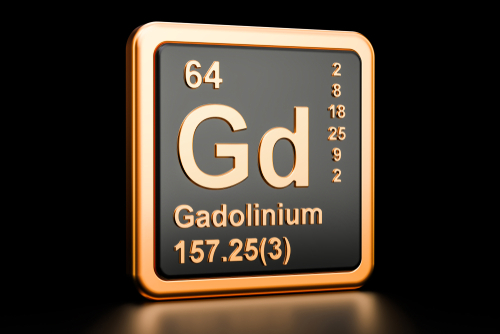GBCAs: what is known, what is unknown?

What SMIL is doing to ensure safe use of GBCAs

Jared Allen, MD, PhD
In light of the FDA safety bulletin updated Jan. 1, 2018 about gadolinium contrast agents (GBCAs), and the recent increased awareness of the issue owing to a lawsuit filed by martial arts star, Chuck Norris, there have been heightened concerns and increased confusion around GBCAs used with MRIs. The FDA is now requiring patient information be shared with those receiving contrast. In May Scottsdale Medical Imaging (SMIL) began offering patient education materials in compliance with the FDA’s directions.
While the current concerns raised about GBCAs center on recent findings of GBCA retention in the brain long after an MRI, it is important to note that there is no evidence showing a clinical impact from such retention.
The mechanism of gadolinium retention in the body has been correlated to the amount of free gadolinium released from the ligand complex. Therefore, macrocyclic agents, which have a greater level of gadolinium binding, have shown less tissue retention and clinically have a better safety profile. Before more recent concerns about gadolinium tissue retention surfaced, the primary safety concern was development of nephrogenic systemic fibrosis (NSF) in people with severely impaired renal function.
A 2006 study suggested a link between Nephrogenic Systemic Fibrosis1 in people with severely impaired renal function and GBCA exposure. NSF is a rare condition that involves fibrosis of skin, joints, eyes and internal organs.
The FDA responded in May 2007 with a black box warning on all GBCAs for the potential risk of NSF in patients with renal failure despite a March 2007 review of the clinical literature showing that 72 of the 74 cases of NSF had received Omniscan™ and the other two had received Magnevist®, both linear GBCAs.
Subsequent studies confirmed that NSF in patients with renal failure was associated with linear-based GBCAs and not with macrocyclic GBCAs. In 2010 the FDA amended its safety alert to recommend against the use of linear-based GBCA drugs, Magnevist, Omniscan and Optimark® in patients with severe kidney disease.
Current concerns stem from a 2016 University of Washington study led by Kenneth Maravilla, MD that found deposition and retention of both macrocyclic and linear versions of gadolinium in normal brain and bone. Deposits from macrocyclic versions were found at lower levels when compared to linear agents2 . Up until these recent findings, it had been thought that brain retention was associated only with the linear form of GBCAs.
Jared Allen, MD, PhD, of SMIL’s Cardiothoracic and Cross Sectional Body Imaging department and SMIL MRI Safety Officer says that SMIL has been proactive in minimizing any potential risk to patients from contrast agents.
“At SMIL we stopped using the linear GBCAs in 2012 and our protocols call for macrocyclic GBCAs only when it is essential for diagnosis,” Allen said. “Furthermore, a recent study found that at the doses that 95 percent of the population is likely to receive in their lifetimes, there is no evidence at this point that gadolinium retention in the brain of people with normal renal function is associated with adverse clinical outcomes.”
At RSNA 2017, Robert McDonald, MD, PhD presented a Mayo Clinic study that found no evidence of neurologic harm from gadolinium contrast agents related to gadolinium retention in the brain and other tissues.
Nevertheless, concerns about gadolinium retention remain due to lack of data regarding long-term effects. As a result the FDA issued its Dec. 21, 2017 Medwatch alert with a strong cautionary recommendation. “As is appropriate when considering the use of any medical imaging agent, health care professionals should limit GBCA use to circumstances in which additional information provided by the contrast agent is necessary, and assess the necessity of repetitive MRIs with GBCAs.”
At this point, Dr. Allen says it may be helpful for referring physicians to bear in mind that all of the known adverse effects of GBCAs have involved the linear versions of the agent, and those only occurred in people with severely impaired renal function.
“At this time, we don’t have the data to understand what relationship, if any, there is between gadolinium administration and long-term adverse effects other than the known relationship between NSF and the use of linear GBACs,” Dr. Allen says. “Gadolinum continues to be used safely millions of times a year and SMIL implements policies and updates to use it appropriately. In certain, specific cases, the benefits of GBCAs continue to outweigh the risks. SMIL will stay informed about ongoing research and recommendations to ensure the safest imaging experience for patients.”
______________________________________________________________________
1 Grobner; “Gadolinium – a specific trigger for the development of nephrogenic fibrosing dermopathy and nephrogenic systemic fibrosis?” Nephrology Dialysis Transplantation: April 2006- Vol. 21, Issue 4, pp 1104–1108
2 Maravilla,K. et al; “Macrocyclic and Other Non–Group 1 Gadolinium Contrast Agents Deposit Low Levels of Gadolinium in Brain and Bone Tissue: Preliminary Results From 9 Patients With Normal Renal Function, ”Investigative Radiology: July 2016 – Volume 51 – Issue 7 – pp 447–453

